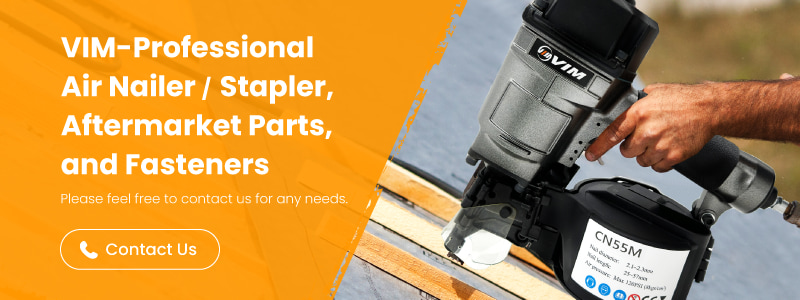What is Finishing Nailer? Differences Between Brad Nailer and Finish Nailer
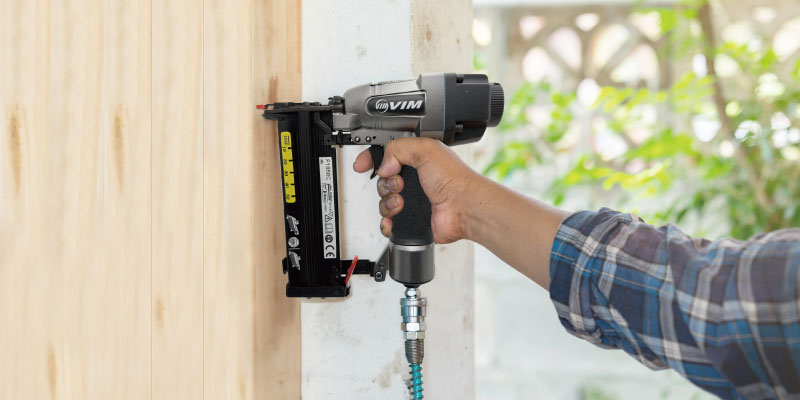
When it comes to woodworking and home improvement projects, a finishing nailer is an indispensable tool that ensures precision and ease. Among finishing nailers, two main types stand out: brad nailers and finish nailers. Understanding the differences between these tools is crucial for achieving professional and durable results.
Selecting the right nailer for your project, whether it's the 18-gauge precision of a brad nailer or the heavy-duty capability of a finish nailer, will ensure professional, long-lasting results. In this guide, we will delve deeper into the differences between brad nailers and finish nailers, key features to look for, and maintenance tips to keep your tools in top condition. Let’s explore how to elevate your woodworking projects with the right finishing nailer.
What is a Finishing Nailer? What are the differences between Brad Nailer and Finish Nailer?
A finishing nailer is an essential tool for woodworking and home improvement projects, designed to drive nails with precision and ease. Within the category of finishing nailers, there are two main types: brad nailers and finish nailers. Brad nailers use 18-gauge nails, ideal for smaller workpieces, while finish nailers use thicker 16, 15, and 14-gauge nails, suitable for tasks requiring greater holding power. Understanding the differences between brad nailers and finish nailers ensures you select the right tool for your project, leading to professional and long-lasting results.
Brad Nailer : The 18-Gauge Wonder
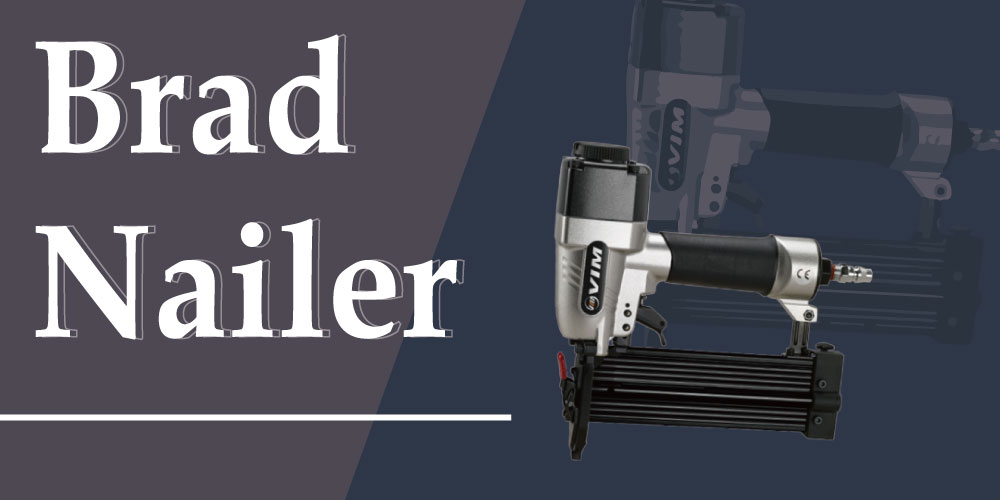 1. Brad nailers are designed to use 18-gauge nails, which are thin and leave minimal marks on the workpiece.
1. Brad nailers are designed to use 18-gauge nails, which are thin and leave minimal marks on the workpiece.
2. 18-gauge nails are perfect for delicate trim work, securing small moldings, and working on detailed cabinetry.
3. Brad nailers excel in projects such as trim work, cabinetry, and small crafts where precision and subtlety are key.
4. Brad nailers are great for small, delicate tasks but lack the holding power needed for larger projects.
Finish Nailer : The Heavy-Duty Tool
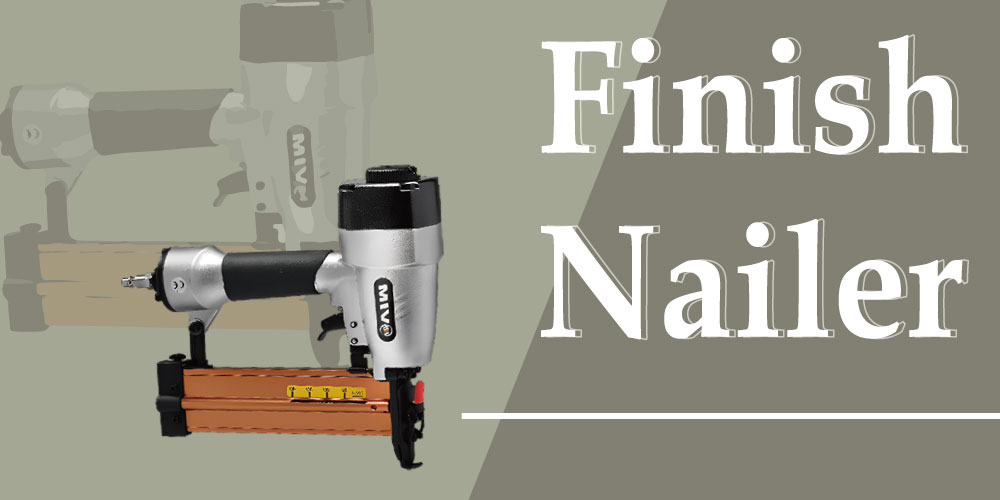 1. Finish nailers use thicker 16, 15, and 14-gauge nails that provide more holding strength. The 16-gauge nails are the most common, while 15 and 14-gauge nails offer even greater holding power.
1. Finish nailers use thicker 16, 15, and 14-gauge nails that provide more holding strength. The 16-gauge nails are the most common, while 15 and 14-gauge nails offer even greater holding power.
2. Finish nailers are perfect for furniture building, crown molding, baseboards, and other tasks that require strong, secure attachments.
3. Finish nailers offer robust holding power for larger projects but may leave more noticeable marks than brad nailers.
Brad Nailer vs. Finish Nailer Features Comparison
| Feature | Brad Nailer | Finish Nailer |
|---|---|---|
| Nail Gauge | 18-gauge nails | Thicker 16, 15, and 14-gauge nails |
| Project Types | ● Trim work ● Cabinetry |
● Furniture building ● Crown molding ● Baseboards |
| Ideal Uses | ● Delicate trim work ● Securing small moldings ● Detailed cabinetry |
● Tasks that require strong, secure attachments |
| Strength and Marks | Great for small, delicate tasks but lack holding power for larger projects | Robust holding power for larger projects, may leave more noticeable marks |
Key Features to Look for in a Finishing Nailer
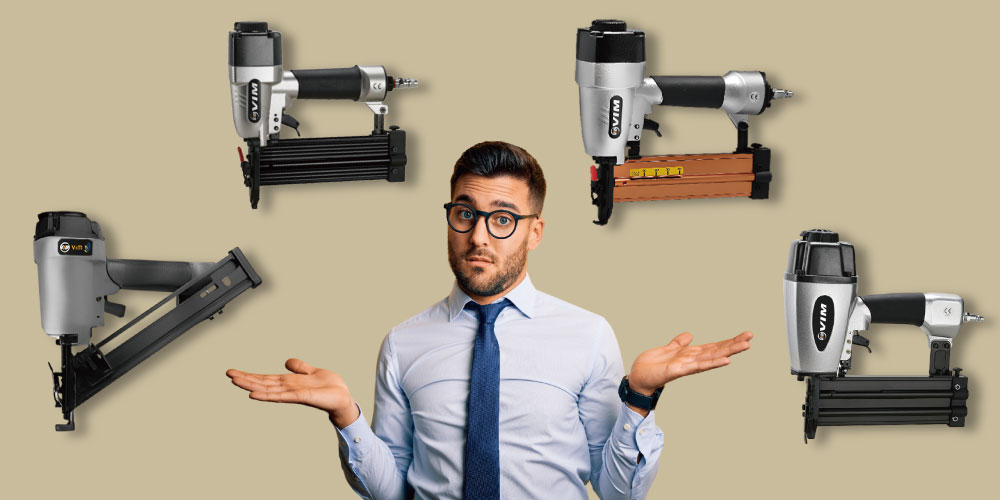 When selecting a finishing nailer, there are several key features to consider ensuring you choose the right tool for your needs. Below are some important aspects to look out for:
When selecting a finishing nailer, there are several key features to consider ensuring you choose the right tool for your needs. Below are some important aspects to look out for:
1. Power source options
Finishing nailers come in four main types based on their power source.
- Pneumatic nailers are powered by compressed air and are known for their consistent power and reliability, making them ideal for heavy-duty and continuous use.
- Electric nailers are plugged into an electrical outlet and offer a steady power supply, which is great for consistent performance without the need for a compressor or battery changes.
- Battery-powered nailers provide greater mobility and convenience as they are powered by rechargeable batteries, perfect for projects where flexibility and ease of movement are essential.
- Gas-powered nailers use a fuel cell to generate power, offering a combination of portability and power, making them suitable for outdoor and remote locations where electricity or compressed air may not be readily available.
2. Magazine capacity
The magazine capacity of a finishing nailer determines how many nails it can hold at one time. A larger magazine capacity means fewer interruptions to reload nails, which can significantly increase efficiency, especially on larger projects. When considering magazine capacity, think about the scale of your typical projects and how often you want to reload. However, a longer magazine requires more steel, which adds weight to the nailer and may cause user fatigue.
【Extended reading: Choosing the Right Coil Nails: 8 Essential Factors for Your Project】
3. Loading mechanism
The loading mechanism of a finishing nailer affects how quickly and easily you can reload nails. Look for nailers with user-friendly and quick-loading systems. Some nailers feature a drop-in loading mechanism, which simplifies the reloading process and minimizes downtime.
4. Ergonomics and weight considerations
Ergonomics and weight are crucial factors, especially if you'll be using the nailer for extended periods. A well-balanced, lightweight nailer reduces fatigue and increases comfort during use. Additionally, features such as a comfortable grip can enhance usability, making your work more efficient and enjoyable.
5. Jam clearing mechanism
Nail jams can be frustrating and time-consuming. Look for a finishing nailer that offers a tool-free jam clearing mechanism to solve these problems. This feature allows you to quickly and easily clear nail jams without needing additional tools, reducing downtime and keeping your project on track.
6. Sequential vs. Bump Firing modes
Many finishing nailers offer the option to switch between sequential and bump firing modes. Sequential firing requires the trigger to be released and pressed for each nail, providing greater precision and safety. Bump firing allows for faster nailing by holding down the trigger and bumping the nailer’s nose against the surface. Choose a nailer that offers the mode that best suits your working style and project needs.
7. Exhaust air management
An adjustable exhaust port allows you to direct the expelled air away from your face and work area. This feature is particularly useful for maintaining a clean work environment and ensuring comfort while using the tool. With VIM’s 360-degree adjustable air deflector, you can adjust the direction flexible according to the usage and situation.
8. Noise level
The noise level of a finishing nailer can be important for some users, especially when working in environments where excessive noise can be disruptive. Look for nailers that are designed to operate quietly or come with built-in noise reduction features.
9. Build quality and durability
Invest in a finishing nailer that is built to last. Look for models made from high-quality materials that can withstand frequent use and harsh working conditions. Durable nailers not only provide better performance but also save money in the long run by reducing the need for frequent replacements or repairs.
10. Warranty
Finally, consider the warranty offered. A good warranty provides peace of mind and protection against defects or issues that may arise with the nailer. We know you care about the warranty, VIM warrants to the original purchaser that our nailers will be free from defects in material and workmanship under normal use for a period of 1 year. If nailers prove to be defective in material or workmanship within the warranty period, we will send the spare parts to you to replace, without charge.
Maintenance and Safety Tips for Finishing Nailers
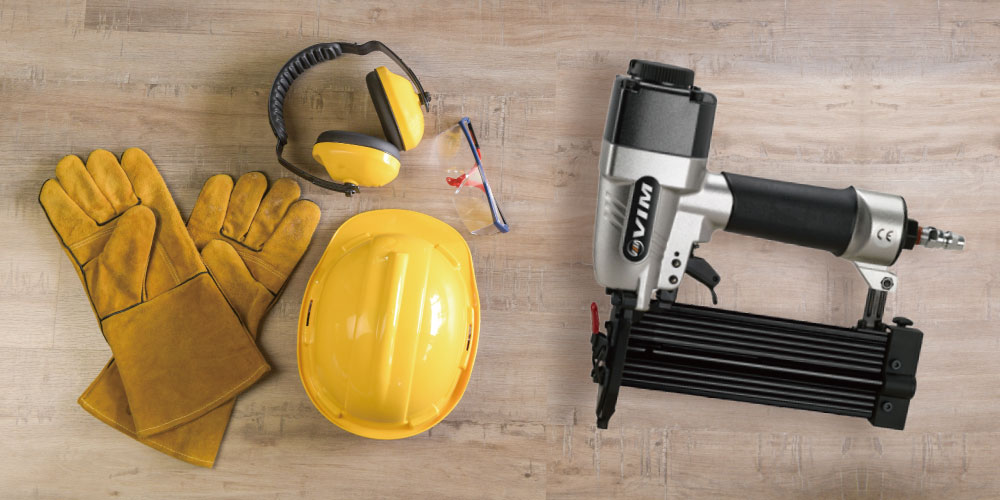 By following these maintenance and safety tips, you can ensure that your finishing nailer remains in top condition and operates safely and efficiently for all your projects.
By following these maintenance and safety tips, you can ensure that your finishing nailer remains in top condition and operates safely and efficiently for all your projects.
Regular maintenance practices to keep your nailer in top condition
1. Clean your finishing nailer regularly
After each use, wipe down the exterior of your finishing nailer with a clean, dry cloth to remove dust and debris. Periodically, use compressed air to blow out any internal dust and particles.
2. Lubricate moving parts
Apply a few drops of pneumatic tool oil to the moving parts of your finishing nailer before each use. This helps reduce friction and wear, ensuring smooth operation and extending the lifespan of the tool.
3. Inspect for wear and tear
Regularly check for any signs of wear and tear on your finishing nailer, including cracks, rust, or loose screws. Replace any damaged parts immediately to prevent further damage and maintain optimal performance.
4. Tighten screws and bolts
Over time, the vibrations from using your finishing nailer can cause screws and bolts to loosen. Periodically check and tighten them to ensure your tool remains secure and functional.
5. Store properly
When not in use, store your finishing nailer in a dry, cool place away from moisture and direct sunlight. Use a protective case to prevent dust and dirt accumulation.
Safety tips for using finishing nailers
1. Wear protective gear
Always wear safety goggles to protect your eyes from flying debris and ear protection to safeguard against loud noises. Consider wearing gloves to protect your hands.
2. Check the work area
Before starting, inspect the work area for any hazards, such as loose objects or uneven surfaces. Ensure that the area is well-lit and free from distractions.
3. Follow manufacturer's instructions
Read and follow the manufacturer’s instructions for your specific finishing nailer model. This includes understanding the proper way to load nails, operate the tool, and perform maintenance.
4. Use the correct nails
Ensure you are using the correct type and size of nails recommended for your finishing nailer. Using the wrong nails can cause jams, misfires, or damage to the tool.
5. Keep hands away from the firing area
Always keep your hands and fingers away from the finishing nailer’s firing area to prevent accidental injury. Use clamps or a workbench to secure your materials when possible.
6. Disconnect when not in use
When you are finished using your finishing nailer or need to perform maintenance, always disconnect it from the air compressor or power source to prevent accidental firing.
Common troubleshooting tips
1. Jamming issues
If your finishing nailer jams, disconnect it from the power source and carefully remove the jammed nail using pliers. Check for any debris that might be causing the jam and clean the nailer thoroughly before resuming use.
2. Inconsistent firing
If your finishing nailer fires inconsistently, check the air pressure or power supply. Ensure that the air hose is securely connected, and that the compressor is set to the recommended pressure for your finishing nailer.
3. Air leaks
If you notice air leaks from your finishing nailer, inspect the seals and O-rings for damage. Replace any worn or damaged seals to restore proper function.
4. Nail depth issues
If nails are not driving to the correct depth, adjust the depth control settings on your finishing nailer. Make sure you are using the right nail length and that the tool is properly calibrated. If your finishing nailer does not have depth control, then check the driver. Worn driver might cause shallower depth, so it is important to replace the driver periodically according to your usage.
5. Unresponsive trigger
If the trigger becomes unresponsive, check for any obstructions in the trigger mechanism and ensure it is properly lubricated. If the issue persists, consult the manufacturer’s troubleshooting guide or seek professional repair services.
How Finishing Nailers Differ from Other Nail Guns
Finishing Nailers are versatile tools designed for carpentry and woodworking projects that demand clean, polished results. Their defining features and applications distinguish them from other nail guns like Framing Nailers and Pin Nailers.
Finishing Nailer
Uses 18-, 16-, 15-, or 14-gauge nails, offering a balance between strength and a clean finish. Finishing nailer is ideal for interior woodworking and decorative trim work, because it always leave small and neat nail holes.
Framing Nailer
Commonly uses 8-to 12-gauge nails, which are thicker and longer, offering the highest driving power among the three. The Framing nailer is suitable for heavy duty tasks, such as framing walls, roofing, and other construction work.
Pin Nailer
Employs 21- or 23-gauge micro-head or headless nails, which are extremely thin and leave nearly invisible holes. It is best for precision applications like molding, decorative projects, and lightweight trims.
Comparison Chart
| Nailer Type | Finishing Nailer | Framing Nailer | Pin Nailer |
|---|---|---|---|
| Nail Gauge | 18-, 16-, 15-, or 14-gauge | 8- to 12-gauge | 21- or 23-gauge |
| Nail Hole Visibility | Small and neat | Large | Nearly invisible |
| Holding Power | Medium | High | Low |
| Application | Interior woodworking and trim | Heavy-duty construction | Delicate and decorative work |
Conclusion
Choosing the right finishing nailer is crucial for the success and quality of your woodworking projects. The type of nailer you select can greatly influence the outcome, whether you need the delicate touch of a brad nailer or the robust holding power of a finish nailer.
For detailed trim work, securing small moldings, or working on fine cabinetry, a brad nailer is the ideal choice. Its use of 18-gauge nails ensures minimal impact on delicate materials. On the other hand, for larger projects requiring strong attachments, such as furniture building, crown molding, or baseboards, a finish nailer with 16, 15, or 14-gauge nails is more suitable.
Investing in a high-quality finishing nailer, such as those made in Taiwan with features like a no-mar rubber pad, powerful motor, 360-degree adjustable air deflector (for pneumatic type), and quick release nose cover, will not only enhance your efficiency but also the durability and professionalism of your results. VIM’s quality tools are an investment in the longevity and excellence of your work. By choosing the right finishing nailer for your specific needs, you can ensure your projects are completed with precision and lasting strength. Contact us if you need any assistance or professional advises.
Article Classification
Recent Articles
- Handheld vs. Foot-Operated Carton Staplers: Which Is Better for Your Workflow?
- The All-in-One Reference for 4 Firing Modes in Pneumatic Tools
- The Ultimate Guide to Pin Nailers: How to Pick the Best One for Any Job
- What Is Decorative Nailer? Know Every Unique Difference About It
- 4 Reasons You Need Mattress Stapler for Professional Mattress Production

